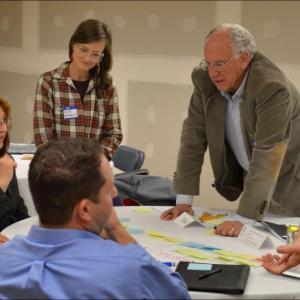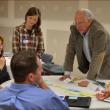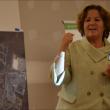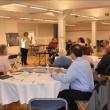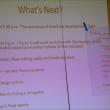Defining a city, one adjective at a time
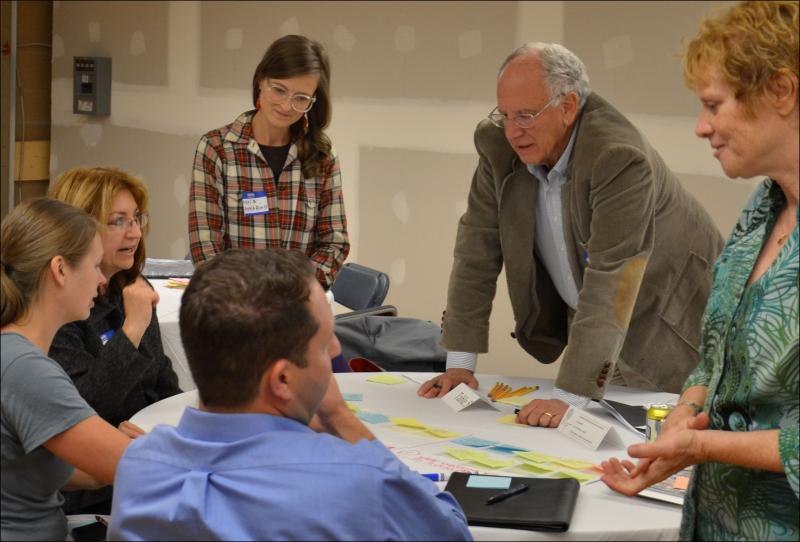 Rockland residents Karla Joseph, Valli Geiger, Alexis Iammarino, George Terrien and Joanne Billington, chairman of the Rockland Economic Development Advisory Committee, gather Sept. 27 to talk about their city, why they live there and how they would describe it to someone from away. (Photo by Lynda Clancy)
Rockland residents Karla Joseph, Valli Geiger, Alexis Iammarino, George Terrien and Joanne Billington, chairman of the Rockland Economic Development Advisory Committee, gather Sept. 27 to talk about their city, why they live there and how they would describe it to someone from away. (Photo by Lynda Clancy)
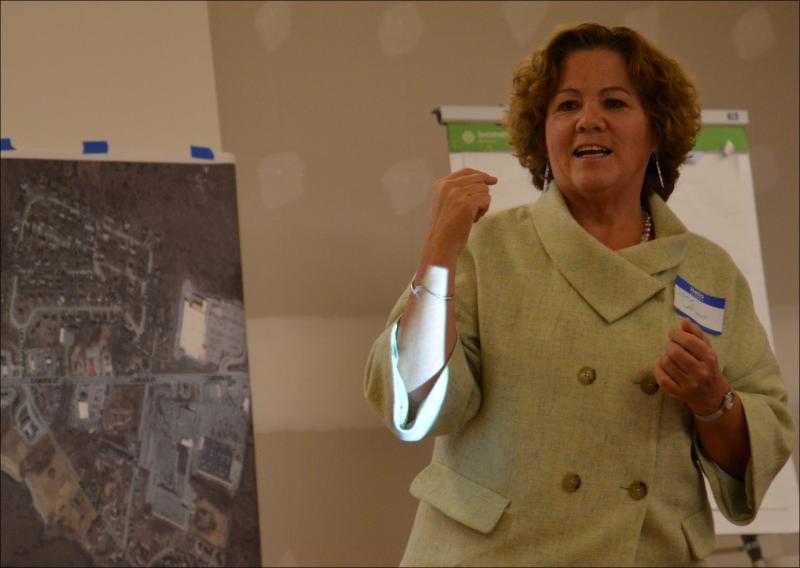 Jane LaFleur, executive director of Friends of Midcoast Maine, leads a community workshop in Rockland that focuses on defining that city's unique attributes. (Photo by Lynda Clancy)
Jane LaFleur, executive director of Friends of Midcoast Maine, leads a community workshop in Rockland that focuses on defining that city's unique attributes. (Photo by Lynda Clancy)
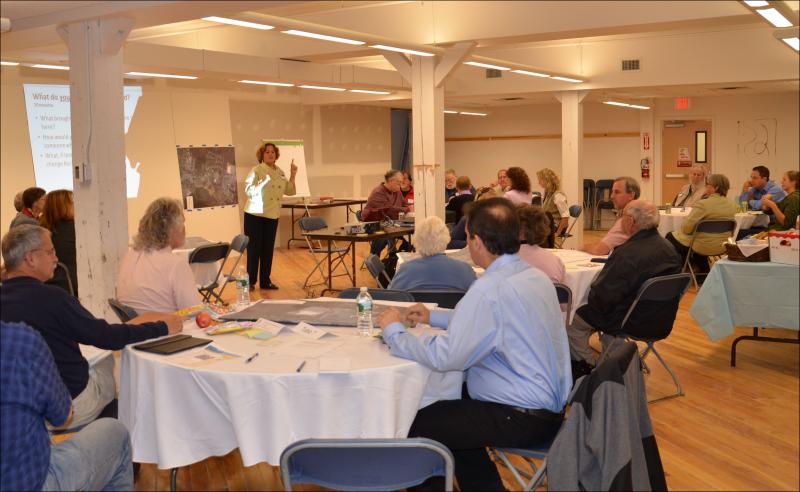 It is a roomful of participants in Rockland at the Breakwater Building Sept. 27 during a workshop convened by the Rockland Economic Development Advisory Committee. (Photo by Lynda Clancy)
It is a roomful of participants in Rockland at the Breakwater Building Sept. 27 during a workshop convened by the Rockland Economic Development Advisory Committee. (Photo by Lynda Clancy)
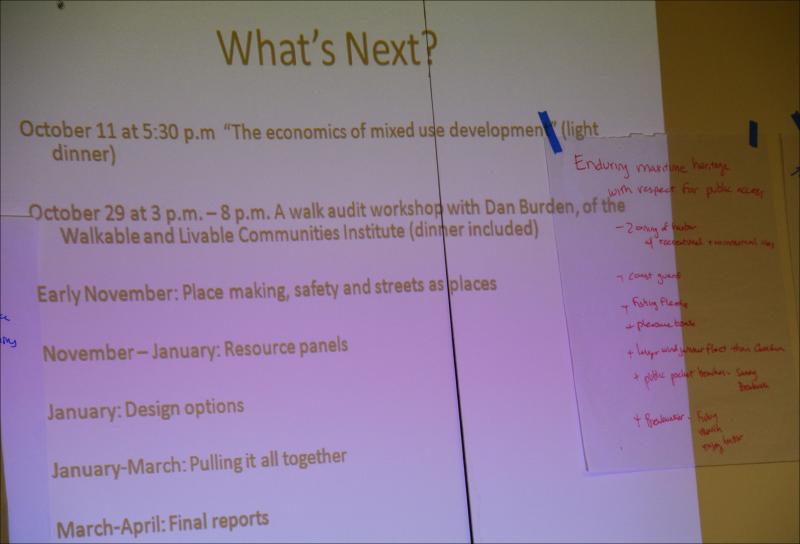
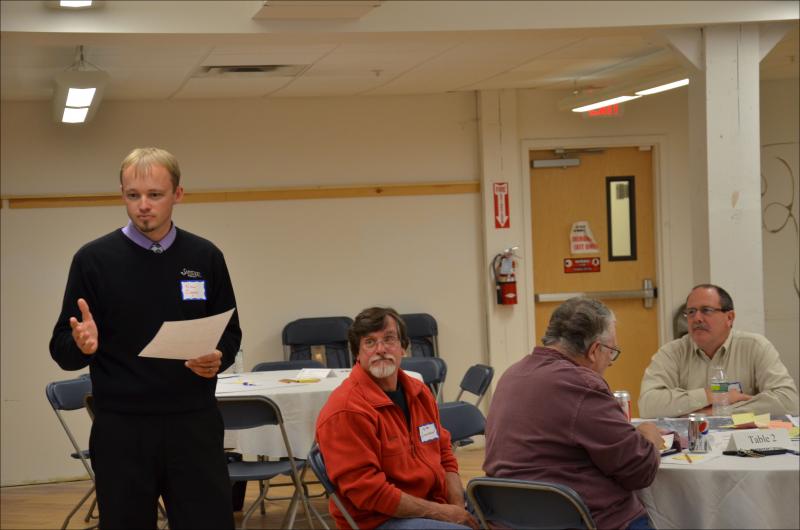 Will Clayton, Kyle Swan, John Root and Brian Harden. (Photo by Lynda Clancy)
Will Clayton, Kyle Swan, John Root and Brian Harden. (Photo by Lynda Clancy)
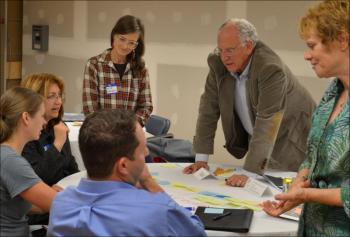 Rockland residents Karla Joseph, Valli Geiger, Alexis Iammarino, George Terrien and Joanne Billington, chairman of the Rockland Economic Development Advisory Committee, gather Sept. 27 to talk about their city, why they live there and how they would describe it to someone from away. (Photo by Lynda Clancy)
Rockland residents Karla Joseph, Valli Geiger, Alexis Iammarino, George Terrien and Joanne Billington, chairman of the Rockland Economic Development Advisory Committee, gather Sept. 27 to talk about their city, why they live there and how they would describe it to someone from away. (Photo by Lynda Clancy)
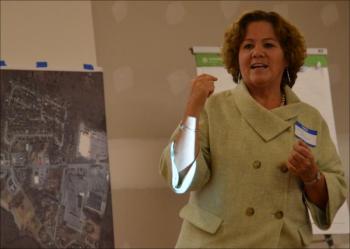 Jane LaFleur, executive director of Friends of Midcoast Maine, leads a community workshop in Rockland that focuses on defining that city's unique attributes. (Photo by Lynda Clancy)
Jane LaFleur, executive director of Friends of Midcoast Maine, leads a community workshop in Rockland that focuses on defining that city's unique attributes. (Photo by Lynda Clancy)
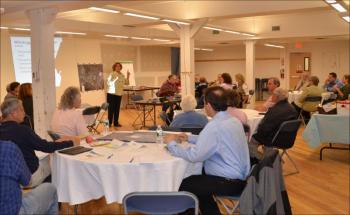 It is a roomful of participants in Rockland at the Breakwater Building Sept. 27 during a workshop convened by the Rockland Economic Development Advisory Committee. (Photo by Lynda Clancy)
It is a roomful of participants in Rockland at the Breakwater Building Sept. 27 during a workshop convened by the Rockland Economic Development Advisory Committee. (Photo by Lynda Clancy)
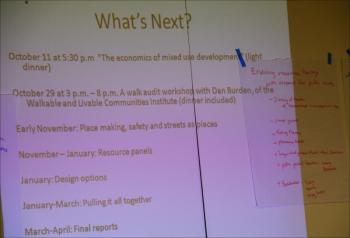
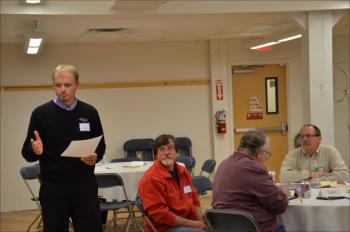 Will Clayton, Kyle Swan, John Root and Brian Harden. (Photo by Lynda Clancy)
Will Clayton, Kyle Swan, John Root and Brian Harden. (Photo by Lynda Clancy)
ROCKLAND — It's a working coastal town, scruffy, artistic, populated by authentic people. It has fresh seafood, is just about the right size, is religiously diverse, has open vistas, a strong regard for public safety, and provides access to a broad range of services, be that banking, welfare, education and shopping. It's a practical place, and while most citizens appreciate it for a number of reasons, at the core, they just feel welcome in this city of 7,300 — Rockland, Maine.
'You're creating a place in keeping with what you love about this place.'
So went the self-assessment of Rockland by a group of citizens gathered in a spare room at the Breakwater Building on Route 1 Sept. 27. They were attending a workshop to help develop a community vision for a strip of Route 1 that runs along the northern edge of the harbor toward the Rockport town line, as well as for the city as a whole. Organized by the The Rockland Economic Development Advisory Committee, the workshop was facilitated by Jane Lafleur, executive director of Friends of Midcoast Maine, which encouraged participants to search their souls with questions such as, "What do you love about Rockland?" What brought you to Rockland?" "Why do you stay here?" and "What do you value as a community?"
"People hate plans that go on the shelves," said LaFleur, who has guided multiple Maine communities through processes by which residents reflect on their own identities. In Rockland's case, the Sept. 27 gathering was but one of a series being held by REDAC to develop what it calls the “heart and soul” of the area and find ways to implement a community vision.
REDAC held its first community workshop June 21 to discuss the future of the Route 1 stretch. From that meeting, it was gleaned that citizens appreciate what exists now — such as sidewalks, nearby residential areas, traffic flow enabled by turning lanes, retail diversity, street trees and water views. But they also said they wanted to improve the visual streetscape, access to ocean views and the traffic flow with coordinated traffic lights, increase the greenscape and decrease asphalt, increase pedestrian safety, and reuse vacant buildings, such as the empty Bonanza Restaurant.
"We want to drill down into those ideas," said LaFleur to the group at the outset of the Sept. 27 meeting. "You are the real experts. Over the next six months, we will be using this space as our workspace. We heard that you care about creating a place. We want to identify values that make Rockland unique."
The goal, she said, is to figure out how to "keep Rockland from becoming anywhere USA."
The strip of highway alternatively referred to as Route 1 and Camden Street, extends from the Glen Cove neighborhood of Rockport to the intersection with Route 17, near Burger King and McDonald's. Once farmland, it has over the last 40 years become predominantly commercial. In the summer, it can be slow-going through the area, as tourists make their way to Rockland, and shoppers turn in and out of Home Depot, Walmart, and a shopping plaza home to Shaw's, Staples and T.J. Maxx, among others. Still, it has a neighborhood feel to parts of it, as residential homes and sidewalks run alongside the throughway.
The workshops, which continue through the fall and winter, will culminate in final reports issued early next spring. The committee and LaFleur will hold a walking audit of Camden Street with Dan Burden of the Washington-based Walkable and Livable Institute Oct. 29, from 3 to 8 p.m., with dinner included.
What do people like about Rockland?
The Sept. 27 meeting drew not just Rockland residents, but a whole table of Rockport citizens, its town manager, economic development director and planner and the select board chairman. The meeting also drew a few residents of Hope, St. George and Union.
"Rockland is important to Rockport," said Rockport Town Manager Robert Peabody, a longtime Rockland resident. He cited the gateway between the two communities, a thought reinforced by LaFleur, who described the juncture between town and city lines as "a flow. We need to always be talking to our neighbors."
As the meeting broke into smaller discussions, the exercise was identify Rockland's qualities that are unique unto itself, and the descriptives began to tumble onto the tables:
"Rockland is a very practical city, with a working waterfront."
"If you want something done, you go to Rockland."
"It has good neighborhood scale."
"Walgreens [the drugstore that was proposed for the corner of Maverick St., and subsequently was not constructed] was out of scale."
"It has plenty of waterfront access for the public."
"The people of Rockland need each other, they value each other, and take care of each other."
"Rockland supports more employment in the region than any other town."
"It is diverse in religious beliefs, in age, income and education levels."
"It is comfortable, and has a welcoming feeling."
"Rockland is just the right size."
Rockland has:
— Fresh seafood
— Open vistas
— Continuing education
— Well-lit streets and sidewalks
— Art museums and galleries
— A strong city hall and a good corps of public safety
— A willingness to close down public streets to traffic in order to hold parties
— Access to services
— The Coast Guard
— A healthy fishing fleet, and windjammer fleet
— Courts, lawyers, judges, criminals
— Friends, neighbors, community centers
— A boardwalk, sailing school, views, and few violent crimes
By identifying and agreeing on core values, LaFleur said the community is in the process of defining its character, which is important to planning the future.
"You're creating a place in keeping with what you love about this place," she said.
For more information, to get involved with the planning and to receive REDAC's e-newsletter, contact the Rockland Community Development Department, 594-0306; James Smith, City Manager and Economic Development Director; Joanne Billington REDAC chairwoman; or Jane Lafleur, jblafleur@friendsmidcoast.org, 236-1077.
Editorial Director Lynda Clancy can be reached by email at lyndaclancy@penbaypilot.com or by calling 207-706-6657.
Event Date
Address
United States

